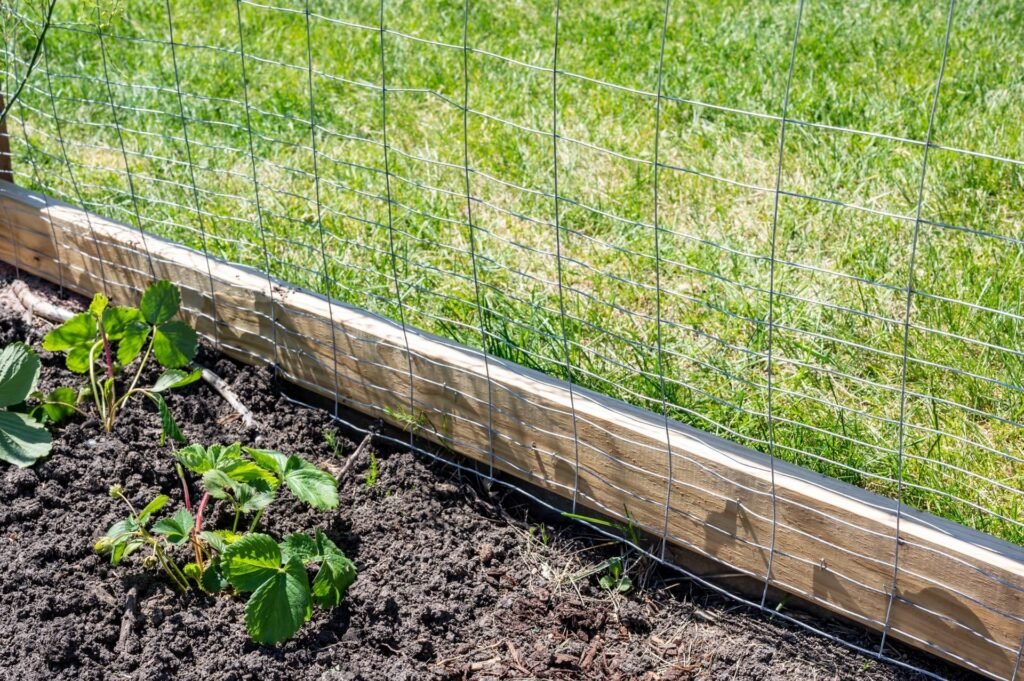How to Stop Your Dog from Digging Under Fences

Many dogs dig under fences driven by various motivations such as separation anxiety, boredom, or the instinct to escape. Addressing this digging behavior effectively involves a combination of reinforcing the fence line with physical barriers like chain link fences or burying chicken wire, and behavioral adjustments. By securing the fence and providing sufficient mental stimulation and physical exercise, homeowners can protect their property and ensure the safety of their furry friend.
Effective Strategies to Prevent Digging
To effectively prevent your dog from digging under fences, a combination of physical modifications and behavioral adjustments is essential.
Securing the Fence
Enhancing the security of your fence can significantly deter digging. Techniques include burying chicken wire beneath the fence, installing chain link fences with dig guards, and placing large rocks or gravel at the base. These measures create a physical barrier that discourages dogs from trying to dig out.
Creating a Digging Zone
One effective method to control where your dog digs is by establishing a designated digging spot. This area can be filled with loose soil or sand, allowing your dog to satisfy its digging instincts without damaging your yard. This spot provides mental stimulation and a safe outlet for their natural behavior.
Enhancing Physical Exercise
Dogs often dig when they have excess energy. Ensuring your dog gets plenty of physical exercise is vital. Regular walks, playtime, and other activities can help burn off energy that might otherwise be directed towards digging.
Using Deterrents
Implementing deterrents can also be effective. Capsicum spray along the fence line can discourage digging by creating an unpleasant experience for the dog if they attempt to dig near the fence. Additionally, installing privacy fences can reduce the visual stimuli that might tempt a dog to dig towards something it sees on the other side.
Identifying the Cause
To tackle your dog’s digging effectively, it’s crucial to understand the underlying reasons. Dogs may dig along the fence line due to boredom, the pursuit of burrowing animals, seeking attention, or the desire to escape. Recognizing these triggers is the first step in curbing this unwanted behavior.
Making Your Fence Dog-Proof
Assuming your fence is tall enough to prevent your dog from jumping over it, here are some tips to dog-proof you fence to prevent your dog from digging a hole underneath it.

Burying chicken wire to effectively deter your dog from digging under the fence is a practical solution. Begin by measuring the length of your fence to determine how much chicken wire you will need. Dig a trench approximately 1 to 2 feet deep and about 6 inches wide directly under the fence. Lay the chicken wire in the trench, ensuring it extends a few inches into the bottom of the fence. Secure the wire to the fence with staples or ties, then fill the trench back with soil, packing it firmly to conceal and secure the wire.

Incorporating additional physical barriers can enhance the effectiveness of your fence. Chain link fences with dig guards provide a sturdy barrier that is difficult for dogs to penetrate. Consider installing a deeper base for the fence, such as embedding large rocks or concrete at the base, which adds weight and makes it harder for dogs to move the soil. These enhancements not only prevent digging but also increase the overall durability and integrity of your fencing solution.
Behavioral Modifications
Training Techniques:
- Observation and Redirection: Begin by closely watching your dog’s behavior. When they start to dig, intervene by redirecting their actions towards more positive activities.
Rewards: Immediately reward your dog with treats, affection, or playtime when they stop digging. This helps reinforce good behavior.
Consistency: Ensure that all family members consistently apply these training methods to help the dog learn effectively.
Mental Stimulation: Provide your dog with toys and puzzles to keep them engaged and reduce the likelihood of digging due to boredom.
Implementing Deterrents:
Loud Noise: Utilize loud noises to startle your dog when they begin to dig near the fence, effectively interrupting the digging behavior.
Capsicum Spray: Apply capsicum spray around the perimeter of the fence to create a mild irritant barrier. The discomfort discourages dogs from returning to the area.
Regular Reapplication: To maintain the effectiveness of the capsicum spray, it’s crucial to reapply it regularly, ensuring that the deterrent remains active and effective.

Keeping Your Dog in the Yard
Regular Checks and Maintenance
Consistent upkeep of physical barriers is crucial to their effectiveness. Periodically inspect barriers like chicken wire and the fence base for any gaps, breaks, or areas where the soil has loosened, which could provide opportunities for your dog to start digging again. Repair any damages promptly and consider reinforcing areas that show signs of wear. This proactive maintenance helps ensure that the barriers remain effective at deterring digging long-term.
Ongoing Behavioral Reinforcement
Alongside physical maintenance, continuous behavioral reinforcement is essential to prevent recurring digging. Keep monitoring your dog’s behavior closely, especially in the early stages of training. Reinforce good behavior with positive reinforcement, and remain consistent with the commands and rewards used. Adjust your strategies as needed based on your dog’s response, and provide ongoing mental stimulation and physical exercise to manage their energy levels and curb unwanted behaviors. This dual approach of maintaining both the physical barriers and reinforcing positive behaviors ensures the long-term success of your efforts to stop your dog from digging under the fence.

Keep Your Dog, Yard, and Fence Safe with Gibson
Successfully preventing your dog from digging under fences requires a holistic approach that combines robust physical barriers with effective behavioral strategies. By integrating methods such as burying chicken wire, using chain link fences with dig guards, and creating designated digging zones, you can physically deter your dog from damaging behaviors. Complementing these barriers with consistent behavioral training and the use of deterrents ensures that your dog understands and adheres to the boundaries you set.
Consistency and attentiveness are key in maintaining not only the integrity of your yard but also a safe and happy environment for your dog. Regular checks and maintenance of your fencing solutions, alongside ongoing reinforcement of positive behaviors, will help solidify the habits you wish to instill in your pet.
For expert assistance in constructing durable and effective fencing solutions that cater to the needs of pet owners, consider working with Gibson Fence and Deck. Our team is committed to providing high-quality fencing that enhances the security and aesthetic of your property while ensuring the well-being of your furry friends. Contact us today to explore how we can help you keep your yard safe and your pets secure.

Dog Digging FAQ
To prevent dogs from digging under a chain link fence, consider burying chicken wire at the base or installing dig guards to block off access. This creates a physical barrier that discourages your dog from attempting to dig.
The best materials for a dog fence include chain link fences combined with buried chicken wire or a privacy fence that extends into the ground. These materials help prevent dogs from seeing through the fence and deter them from digging.
Training your dog to stop digging in the garden involves behavior modification techniques such as positive reinforcement when they play in designated areas, and redirecting them when they start to dig holes. Consulting a dog trainer can also provide specialized strategies tailored to your dog’s habits.
Yes, a privacy fence can reduce your dog’s visual triggers and restrict its ability to see potential distractions or animals in the neighborhood, thereby helping to prevent dogs from digging.
If your dog has dug holes around your existing fence, fill these holes with dirt or gravel to discourage further digging. Additionally, reinforce the fence base with additional fencing material to secure any weak spots.
Keeping your dog entertained involves providing enough exercise, engaging toys, and activities. Building a designated digging area filled with soft soil or sand can also allow them to dig without damaging your yard.
A quick fix for a fence that a dog has dug under involves filling the trench directly beneath the fence line with concrete or large rocks. This immediate measure provides a temporary solution while you plan a more permanent fix such as burying chicken wire.
Effective deterrents include the use of scent barriers like capsicum spray, installing a see-through fence with visual blockers, and using noise deterrents to startle the dog away from sensitive areas.
Design a landscape that prevents your dog from digging by incorporating rough-textured mulch or large decorative rocks around the fence line. Place engaging features like a sandbox or a digging zone away from the fence to attract your dog to appropriate areas.
Regular inspections and maintenance of your fence are vital. Ensure there are no gaps or weak points where your dog could start to dig. Consider planting thick bushes or embedding additional barriers in the ground leading up to the fence to further discourage digging.
